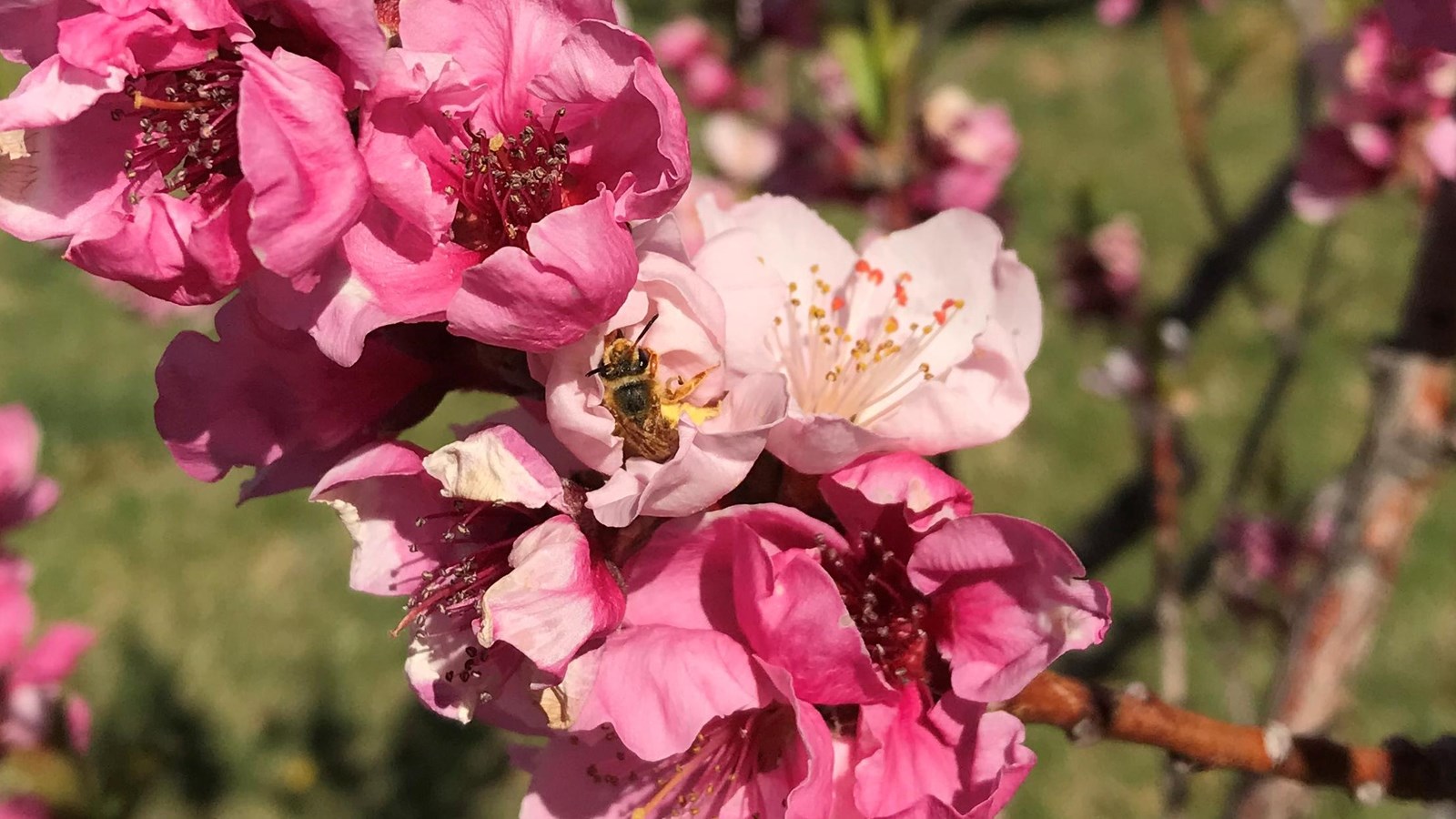Last updated: June 6, 2025
Place
Max Krueger Orchard

NPS / Shauna Cotrell
The highway is now alongside the Fremont River. The two run parallel from here east to Hanksville, where the Fremont merges with Muddy Creek and becomes the Dirty Devil River. The Dirty Devil ends at the Colorado River at Glen Canyon National Recreation Area, to the south.
The Krueger Orchard is primarily home to Rosa peaches. Water is diverted from the river to the orchards to sustain the crops. The park’s orchard crews vigilantly tend the trees and limit the use of artificial pesticides and herbicides. The park has around 50 different varieties of fruit! Several of these are heirloom varieties, passed from generation to generation. Some, like the Capitol Reef Red apple, don’t grow anywhere else in the world! Orchard managers also import new, climate change-resistant varieties from nurseries across the west. Eating delicious, fresh fruit in the middle of a desert park is a unique experience at Capitol Reef, connecting us to the settler legacy of Utah.
However, much has changed since the late 1800’s. Fruita won’t remain an oasis forever. Humans impact the riparian habitat in many ways. Invasive species, including tamarisk trees and tumbleweed, outcompete native plants and animals. Water use for farming, livestock, and houses also alters the food web. It morphs the landscape by changing the rate of erosion. Industry, transportation, and construction release harmful chemicals into sensitive waterways. Without changes to how we use and live with our resources, riparian ecosystems will continue to decay. It may become too difficult to maintain the orchards in the park.
The Krueger Orchard is primarily home to Rosa peaches. Water is diverted from the river to the orchards to sustain the crops. The park’s orchard crews vigilantly tend the trees and limit the use of artificial pesticides and herbicides. The park has around 50 different varieties of fruit! Several of these are heirloom varieties, passed from generation to generation. Some, like the Capitol Reef Red apple, don’t grow anywhere else in the world! Orchard managers also import new, climate change-resistant varieties from nurseries across the west. Eating delicious, fresh fruit in the middle of a desert park is a unique experience at Capitol Reef, connecting us to the settler legacy of Utah.
However, much has changed since the late 1800’s. Fruita won’t remain an oasis forever. Humans impact the riparian habitat in many ways. Invasive species, including tamarisk trees and tumbleweed, outcompete native plants and animals. Water use for farming, livestock, and houses also alters the food web. It morphs the landscape by changing the rate of erosion. Industry, transportation, and construction release harmful chemicals into sensitive waterways. Without changes to how we use and live with our resources, riparian ecosystems will continue to decay. It may become too difficult to maintain the orchards in the park.
